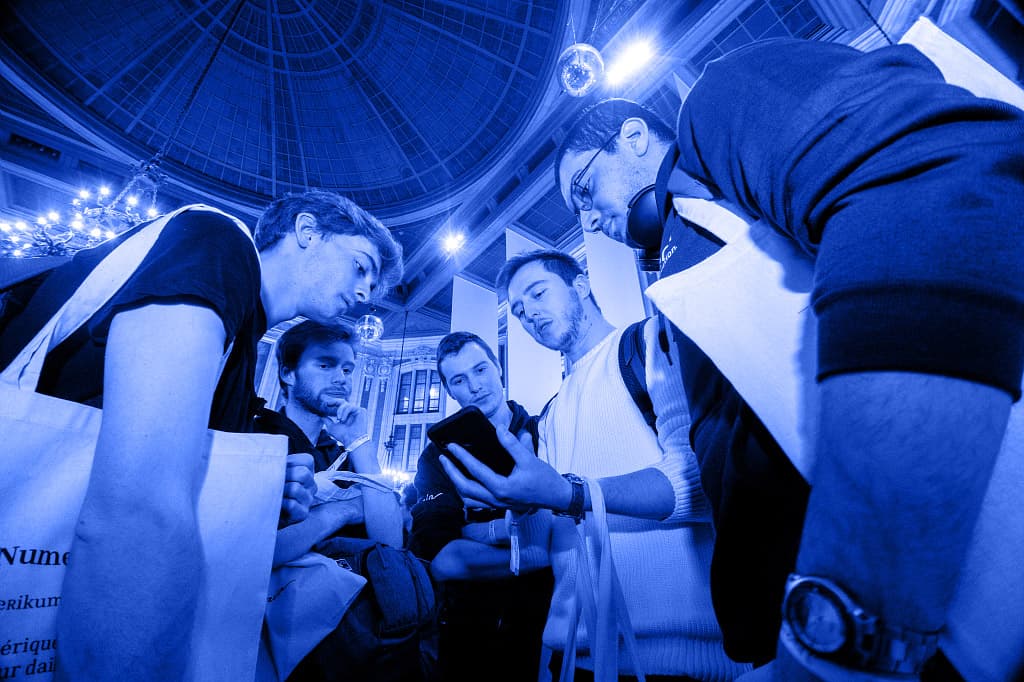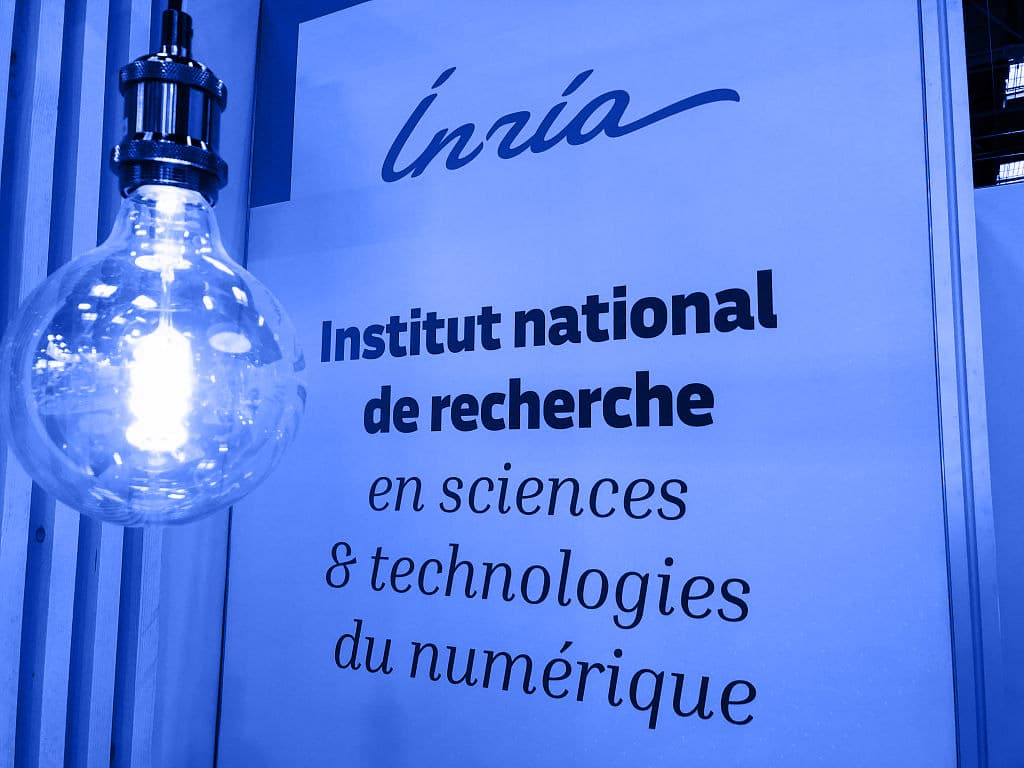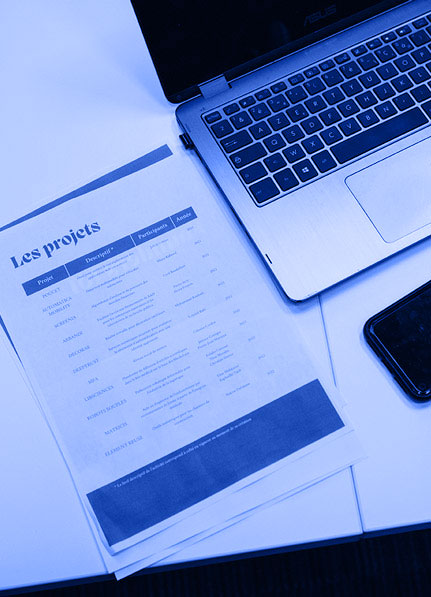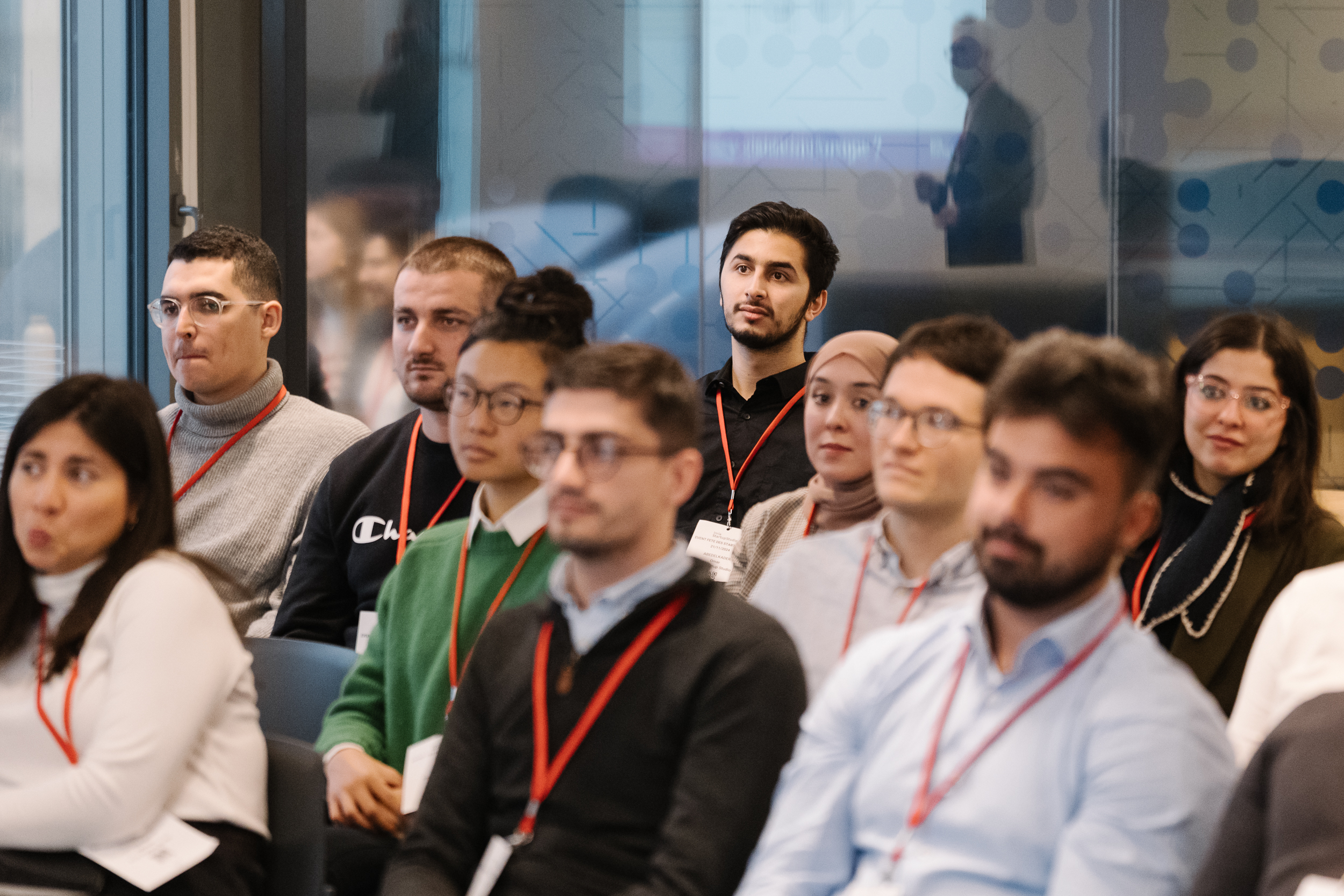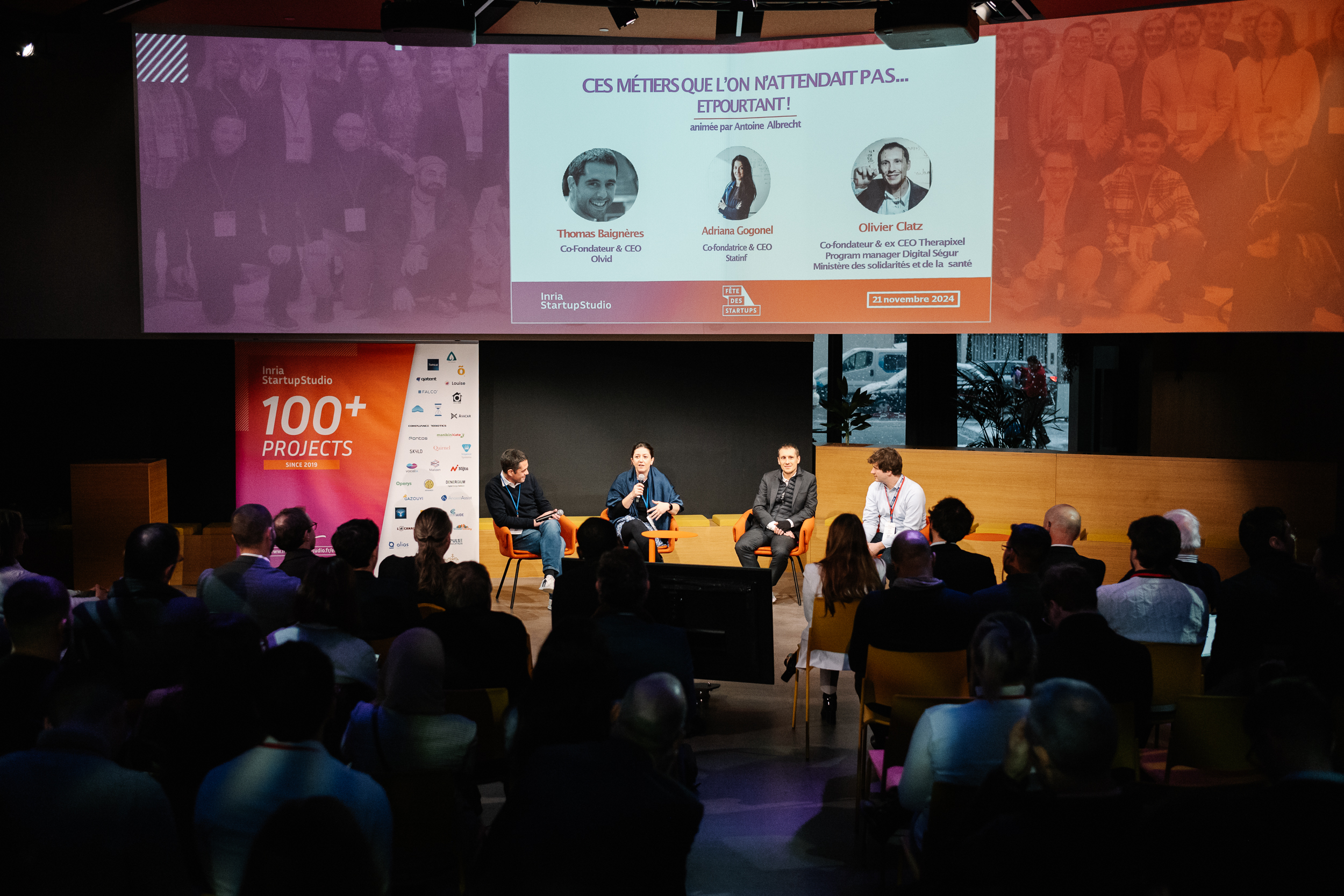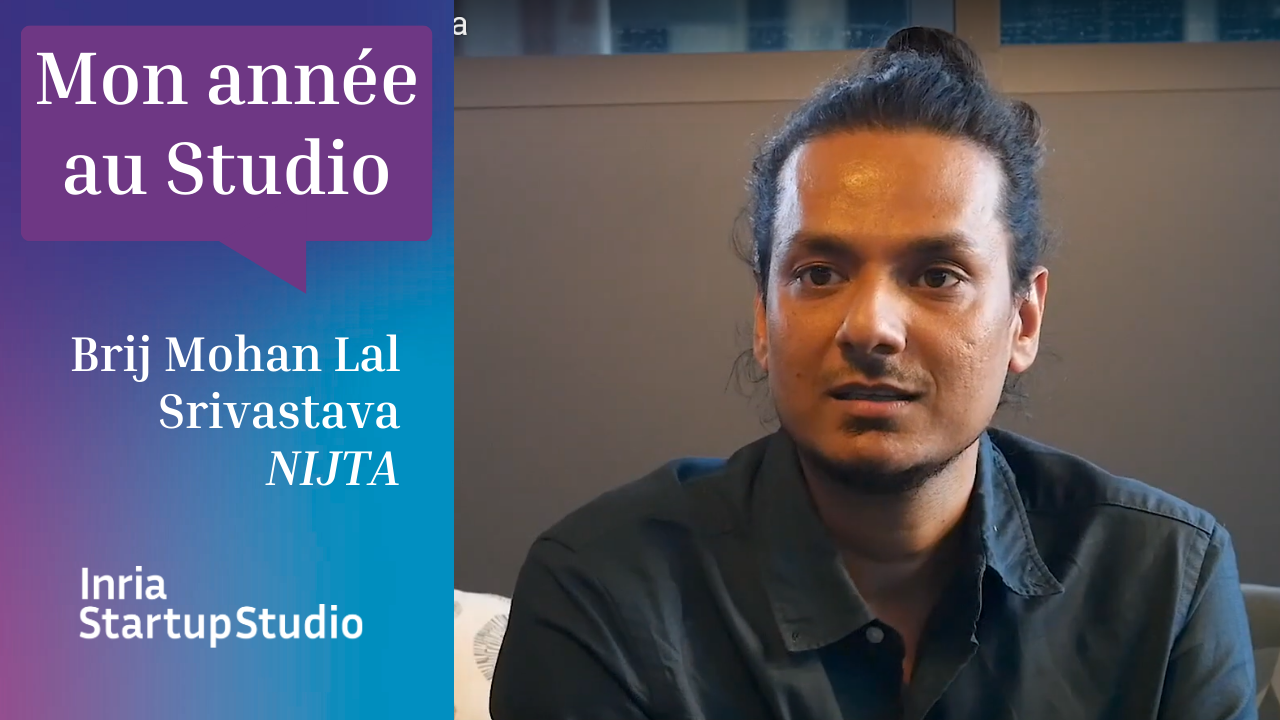
Intellectual property – a point of view
Inria Startup Studio regularly organizes workshops on different dimensions of innovation and entrepreneurship. Intellectual property is a technical subject, often left to experts such as intellectual property attorneys or institutions. However, a slightly offbeat look from a non-expert can be of interest. This perception was confirmed by a very similar…
Inria Startup Studio regularly organizes workshops on different dimensions of innovation and entrepreneurship. Intellectual property is a technical subject, often left to experts such as intellectual property attorneys or institutions. However, a slightly offbeat look from a non-expert can be of interest. This perception was confirmed by a very similar workshop given in Switzerland for about ten years to apprentice entrepreneurs who were students or visitors to the Ecole Polytechnique Fédérale de Lausanne.
Why a different point of view?
The general attitude about intellectual property (IP) is that in its absence an innovator is poorly protected. She will be quickly copied and even surpassed if she does not have the resources to face the competition. Investors would demand solid intellectual property, and they would also demand that the company be its owner and not just a licensee. All these arguments are relatively well known, but are they as solid as sometimes claimed?
In 2014, the then nearly-universally respected Elon Musk surprised everyone by putting the patents of his company Tesla into the public domain: “Technology leadership is not defined by patents, which history has repeatedly shown to be small protection indeed against a determined competitor, but rather by the ability of a company to attract and motivate the world’s most talented engineers.” (See http://www.teslamotors.com/blog/all-our-patent-are-belong-you)
More virulent, Michele Boldrin and David Levine are two recognized experts on the subject and the authors of a book Against Intellectual Monopoly and a research article The Case Against Patents in which they illustrate their remarks with stimulating examples: Watt would have blocked any progress on the steam engine during the period covered by the patents he had filed. Big pharma argues the importance of patents to cover their R&D costs when very often inventions come from university laboratories and hospitals are the site of clinical trials whereas the public authorities have only a limited return on these upstream investments and expenses. However, the purpose of this article is not to make an argument against intellectual property but above all to nuance its importance and illustrate its complexity.
The Google case
It is not always known that there was a patent filing at the origin of the creation of the most famous startup of the Internet. In 1997, Stanford University filed a provisional patent [link] with Larry Page as an inventor, where he was a doctoral student [See https://patents.google.com/patent/US8521730B1] . It is a patent on software (something that is not allowed in Europe), Page is the sole inventor and Stanford University remained the owner for the life of the patent. It has only been registered in the United States, a considerable market for technological innovation. Perhaps even more surprisingly, Google did not file any patents until 2003, 14 between 2003 and 2005, and had filed 1,873 in 2013! Are patents an attribute of the powerful?
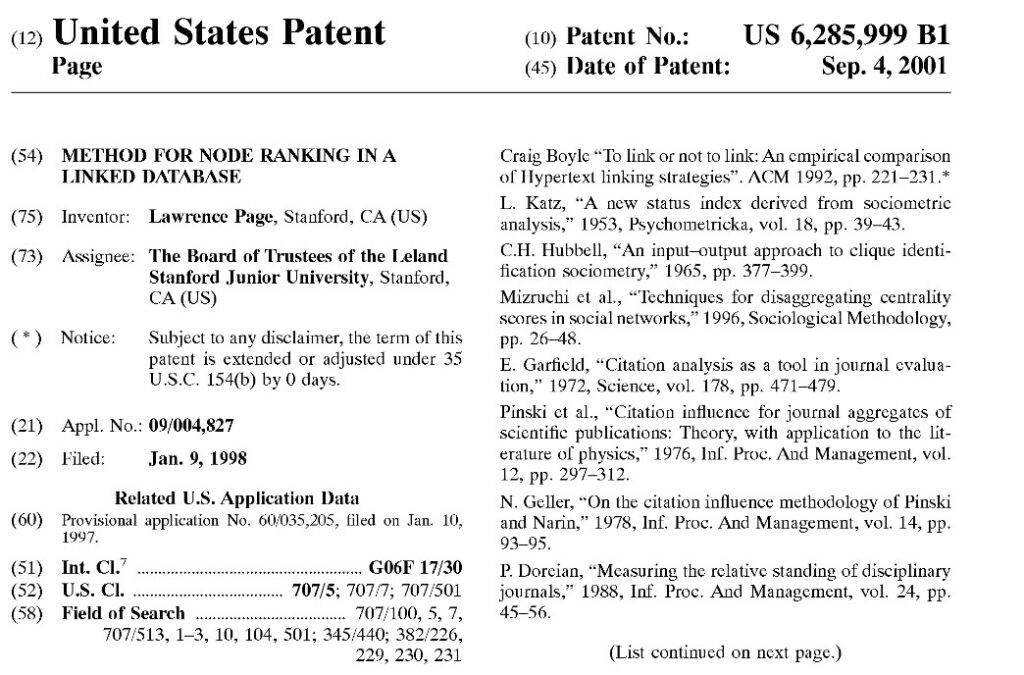
Google was not the owner of this patent, but the university granted an exclusive license to the startup in December 1998, two months after its creation. The license also reveals some surprises: exclusivity ran only until 2011, while the life of a patent is 20 years from the date of its filing. The financial terms of the license were secret, we only know that there was an initial payment then annual payments as well as an equity stake defined by a percentage of the company at a valuation of eight million dollars. See https://corporate.findlaw.com/contracts/operations/google-and-stanford-amended-and-restated-license-agreement.htmlent.html
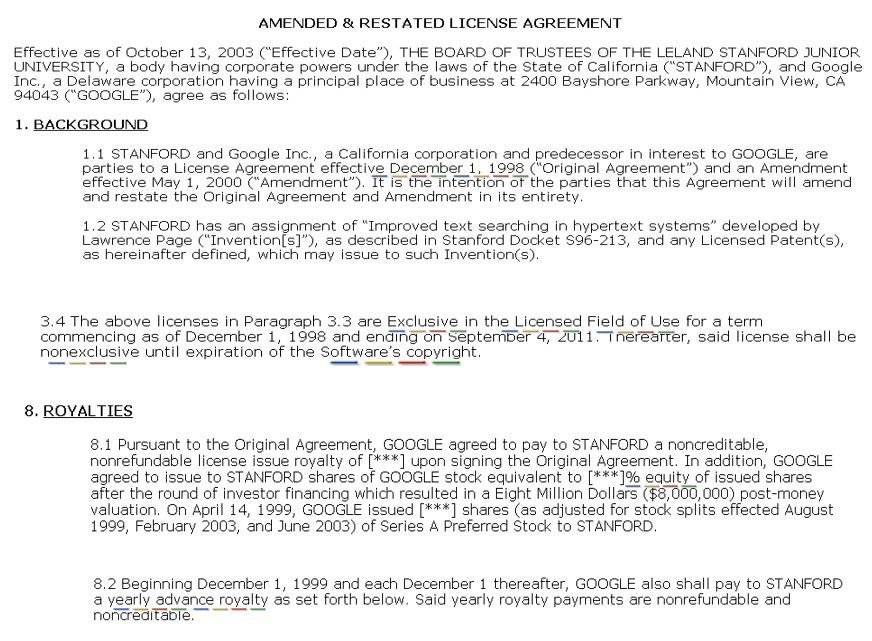
It is generally very difficult to find information on the licensing of technologies by universities to deeptech startups. The exception is the IPO document of those startups that reach this stage. A limited statistic on about thirty of them shows that, on average, the equity share is 10% at creation or almost equivalently 5% at the time of the first round of investment of an amount of $5M (investors often have 50% of the startup for such amounts). In the case of Google, the stake was equivalent to 2.3% when it was created. Why such a small number? It seems that few people believed in the potential of the startup and it is possible that a software patent is perceived as weak intellectual property.
To simplify, a license is made up of three financial elements: – first, the universities take a 5% post-series A equity stake (representing a few million Euros) or equivalently 10% upon creation, – then, there may be royalties based on the sales of the products using the licensed technology, approximately 2% and the range may be from 0.5% to 5%. A minimum annual amount is generally requested, of the order of a few tens of thousands of Euros, – finally an important detail: start-ups pay for the maintenance of the intellectual property from the date of the license.
IP License or ownership?
As I mentioned in the beginning, Intellectual property (IP) is a sensitive and often dividing subject. Even after discussing the general value of intellectual property, there are plenty of side issues. One of them is the specific question of how is considered the possession of intellectual property by a startup rather than an exclusive license granted by an academic institution, in particular by investors. Although there is a rich argument on the advantages and disadvantages of both situations, there is no fundamental difference between licensing and assignment from the perspective of the startup strategy, except what occurs in the event of bankruptcy or liquidation. The license is not an asset and therefore the intellectual property is no longer usable in the event of liquidation. With this nuance, admittedly significant, there are two additional points:
– Some investors think that the owner pays for the maintenance of the IP and prosecutes the possible “infringers” to defend this property. In practice, it is the licensee who pays and prosecutes from the date of the license.
– In the case of a sale (acquisition of the startup by a third party), it is important that the license can be transferred and this is a major element, which must be guaranteed. However, there may be political or strategic (sovereignty) issues to take into account as possible exceptions.
A price for the transfer can however be added as an option in the license when or if it is possible (in addition to the financial conditions of licensing). For example, the Bayh-Dole Act prohibits the sale of assets financed by the federal state in the USA (which may explain why Google does not own its initial patent) See https://en.wikipedia.org/wiki/Bayh-Dole_Act.
Inria has therefore added a clause in its license models: Possibility of assignment of intellectual property assets.Inria generally grants licenses to use intellectual property assets as described in Article 3. However, Inria may consider an assignment to the COMPANY in the event of its acquisition allowing liquidity of the BSAs [equity options] described in Article 7, and this in accordance with French legislation on business acquisitions.If the acquirer of the COMPANY wishes to obtain ownership of the assets granted under license, the price of this transfer will represent 1% of the acquisition transaction of the startup (expressed in Euros) with a floor value (i.e. minimum) of €1M(one million Euros).
A final point: what does a license grant? “Licensing a patent simply means that the patent owner grants permission to another individual/organization to make, use, sell etc. his/her patented invention. This takes place according to agreed terms and conditions (for example, defining the amount and type of payment to be made by the licensee to the licensor), for a defined purpose, in a defined territory, and for an agreed period of time.” See https://www.wipo.int/patents/en/faq_patents.html#accordion__collapse__02
Types of intellectual property
While patents and copyrights are arguably the two best-known forms of IP in the world of digital deeptech startups, it should be remembered that there are other forms, such as know-how (which must remain secret), trademarks and designs. Another family, that is rarely useful for startups, are Geographical Indications – GI – including appellations of origin (AO), protected designations of origin (PDO) and protected geographical indications (PGI). See https://www.wipo.int/geo_indications/en/
By way of illustration, Coca-Cola kept secret the recipe for its flagship product launched in 1886 in a safe, registered its brand and its famous logo in 1893, protected the design of its no less famous bottle in 1937. If I’m not sure that the firm has many GIs as its products seem global, it has filed more than 6000 patents including more than 1000 in the USA, 600 in Europe, 500 in China, Japan or Australia. Its websites are fully covered by copyright.
The reader can advantageously discover the sites of the intellectual property institutes, for example the French INPI, www.inpi.fr, the Swiss IPI, www.ige.ch/en and international WIPO www.wipo.int.
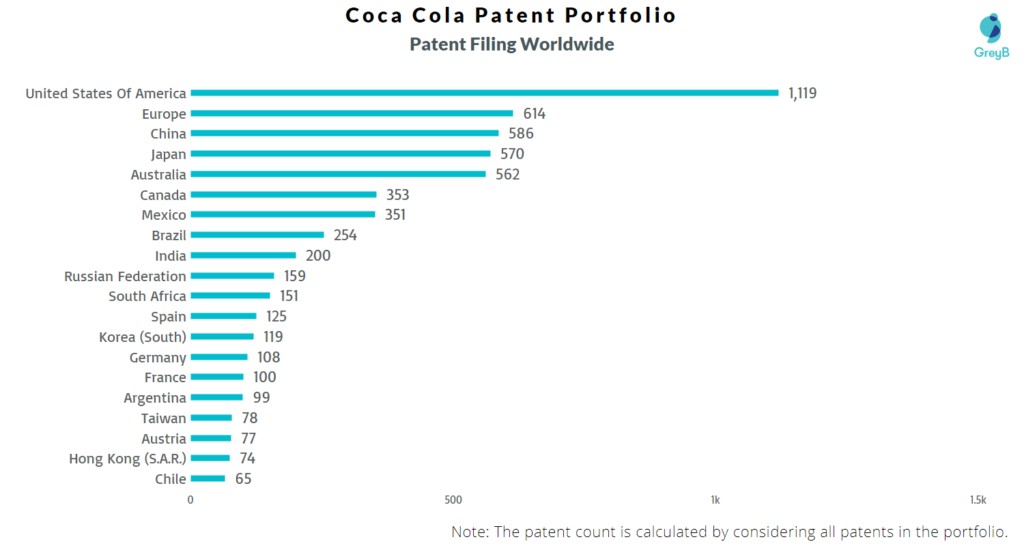
This article does not aim to go into more detail on each form of intellectual property. Anecdotally, we can note the legal battle over the Apple brand in the field of music between the computer company and the company that protected the rights of the Beatles, see https://en.wikipedia.org/wiki/Apple_Corps_v_Apple_Computer. And what about the Champagne GI through this shocking example! The commune of Champagne, 912 inhabitants, located in the canton of Vaud, in Switzerland, had to give up mentioning the name of Champagne on the (non-sparkling) wines produced in its 28-hectare terroir, within the framework of an international agreement between Switzerland and the European Union, in December 1998. An appeal filed by the 43 winegrowers resulted in the confirmation of this ban on August 22, 2007, by the Court of Justice of the European Union.
Copyright
Copyright is a complex subject. Who is the author and who owns the rights? In France, “in principle, it is the author who created the software, through the production of the preparatory documentation and then the development of the source code necessary for the operation of the software, who is the holder of the intellectual property rights over this software. It is possible to modify the ownership of the rights thanks to an assignment contract which may limit the assignment to certain economic rights (exploitation, adaptation, reproduction, etc.) as well as to a given duration and/or geographical area. Only the moral rights (right to paternity and right to respect for the work) remain attached to the author of the software and cannot be transferred. However, there is an exception which concerns software created by one or more employees in the performance of their duties or according to the instructions of their employer (Article L113-9 of the Intellectual Property Code). When these three cumulative conditions are met (being in the presence of software/created by an employee benefiting from an employment contract/in the performance of their duties or according to the instructions of their employer), the economic rights relating to software are automatically vested to the employer. See also https://www.app.asso.fr/en/
With the condition of originality, the elements of software that can be protected by copyright are: the preparatory design material, namely the specifications detailing the operation of the software, its structure, its purpose, its interface models, how it should be developed, etc. ; the source code; the documentation / user manual; the graphical interface; the multimedia elements incorporated into the software (music, sound, video, image, text, etc.); the title of the software. It should be noted that the functionalities of a software are not protected by copyright. In practice, it is advisable to list the people who contributed to the constitution of the code and its documentation and to define distribution keys (% share of the whole for each author) which is, one may suspect, something complex and without easy rationality. In case of disagreement between authors, it is advisable to call on a neutral third party and, if possible, an expert.
The symbols ©, TM, ® are often visible but are they well understood? The first indicates the copyright, it is free and is often followed by the year of publication and the authors’ name, but it is not mandatory to mention it to guarantee the rights of the creator. TM and ® are related to trademarks, the first ones announces and claims rights to a Trademark even if they have not yet been obtained or even registered, while the second ones means “Registered” and is only used when the rights have been granted.
Patents
A patent protects an invention defined as a technical solution to a technical problem. To be patentable, an invention must be new, non-obvious (not a simple development of the state of the art) and applicable (it must have a practical utility). Protection lasts for twenty years if maintenance fees are paid in each country where it is protected. A patent has an owner – who is not always the inventor or inventors – it can be sold, transferred, licensed (rented). A patent does not only have advantages: the invention is disclosed, it does not give a right of use, it is often difficult to understand (I encourage you to discover the description in the last link of the article) and finally it is costly!
A patent must have a technical feature, but there are many exceptions to patentability: discoveries, aesthetic creations, games and software (at least in Europe), methods of treatment and diagnosis, inventions which are unethical and contrary to morality, animal and vegetable species.
Who decides to file a patent?
There are different options depending upon the nature of the invention (in the workplace or not). INPI indicates in particular “As soon as he receives the declaration, the employer has:
• 2 months to give their opinion on the classification proposed by the employee. At the end of the 2 months, if the employer has not reacted, he is presumed to have accepted the proposed classification
• 4 months to exercise their assignment right. In the event that the classification proposed in the declaration is that of an invention outside of the attributable mission, the employer must, if he agrees with this classification and if he wishes to become the owner of the invention, exercise his assignment right within 4 months. If he does not do so, the employee then freely disposes of the invention.” See https://www.inpi.fr/en/comprendre-la-propriete-intellectuelle/le-brevet/la-declaration-dinvention-de
But we asked INPI to find out if an employer can decide not to file a patent application and prevent an employee from doing so. To be continued perhaps…
The filing process is technical as shown in the following figure:
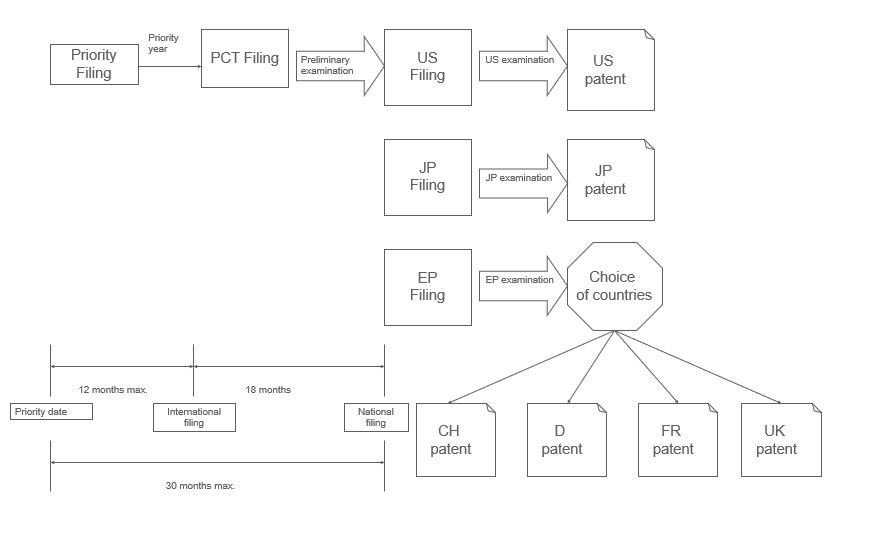
Note that there is not (yet) a European patent but a unified filing process giving in the end, a patent for each country of the continent. This is evolving towards a so-called unitary patent which could come into effect on June 1, 2023 (this article was written in April 2023). See https://www.epo.org/applying/european/unitary/unitary-patent/start.htmlml
It is also important to consider the confidentiality of the invention in the early stages:
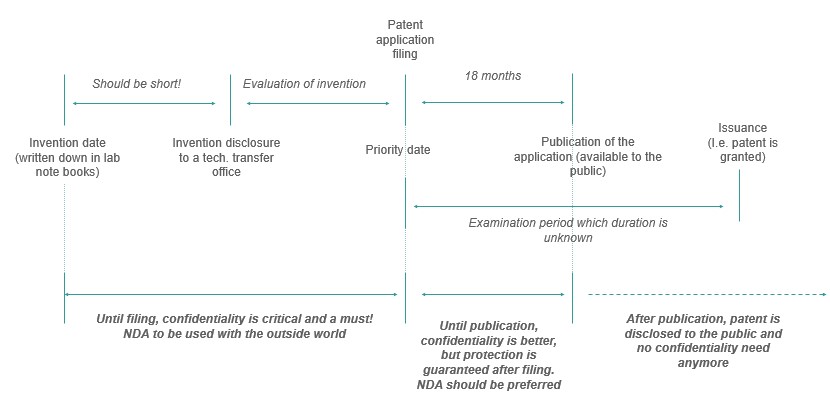
In the United States, there is a grace period which allows an inventor to file a patent even if she had disclosed her work in the 12 months preceding the filing. The United States has always favored the isolated inventor who knows little about the mysteries of intellectual property. On the other hand, they have abandoned the priority given to the date of invention rather than the date of filing which is today the only one that is valid to define the anteriority of an invention.
A famous example of the latter subject was the invention of the laser, of which Nick Taylor’s book gives an fascinating account (see https://www.nicktayloronline.com/laser__the_inventor__the_nobel_laureate__and_the_thirty_year_patent_war_11933.htm) : “The laser is one of the remarkable inventions of all time, with virtually endless uses in communications, technology, and medicine. Even more remarkable is how it was invented-by an obscure Columbia University graduate student who had already spent years unsuccessfully working on his Ph.D. This is the story of Gordon Gould, who invented the laser and gave it its name, and then had to fight a prominent, Noble Prize-winning physicist to claim the rights to his invention, a fight that lasted thirty years.” A must-read if you are curious about the topic.
And what about the patent on the computer, narrated by Walter Isaacson, the biographer of Steve Jobs, in his book The Innovators: “On June 26, 1947, J. Presper Eckert and John Mauchly were the first to file for patent on a digital computing device (ENIAC), much to the surprise of Atanasoff. The ABC [Atanasoff–Berry Computer] had been examined by John Mauchly in June 1941, and Isaac Auerbach, a former student of Mauchly’s, alleged that it influenced his later work on ENIAC, although Mauchly denied this.The ENIAC patent did not issue until 1964, and by 1967 Honeywell sued Sperry Rand in an attempt to break the ENIAC patents, arguing the ABC constituted prior art. The United States District Court for the District of Minnesota released its judgement on October 19, 1973, finding in Honeywell v. Sperry Rand that the ENIAC patent was a derivative of John Atanasoff’s invention.” [A trial had begun in June 1971 and the ENIAC patent was therefore made invalid]
So by way of conclusion, I let you discover this remarkable invention protected by the Australian patent office, advising you not to reinvent the wheel: http://pericles.ipaustralia.gov.au/ols/auspat/applicationDetails.do?applicationNo=2001100012
Publication date: 25/05/2023
Want to get started ?
